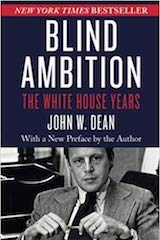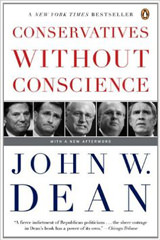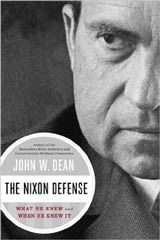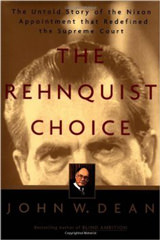Harvard Law professor Richard Lazarus has posted a pre-formal publication copy of his forthcoming Harvard Law Review article entitled: “The (Non)Finality of Supreme Court Opinions,” which Adam Liptak, who reports on the Supreme Court for the New York Times, has thoughtfully called to the attention of general readers. Liptak summarized the situation in his opening sentence: “The Supreme Court has been quietly revising [read: secretly revising] its decisions years after they were issued, altering the law of the land without public notice.” The Times headline put it more bluntly: “Final Word on U.S. Law Isn’t: Supreme Court Keeps Editing.”
Anyone familiar with first released opinions of the Supreme Court—called “bench opinions” and “slip opinions”—is aware of their conspicuous warning:
NOTICE: This opinion is subject to formal revision before publication in the preliminary print of the United States Reports. Readers are requested to notify the Reporter of Decisions, Supreme Court of the United States, Washington, D.C. 20543, of any typographical or other formal errors, in order that corrections may be made before the preliminary print goes to press.
Before Lazarus brought the protracted and usually secret editing process to public attention, few knew about the “editorial” changes that go on and on, for years and years, with Justices tweaking much more than typos and minor errors.
Fixing mistakes is good and appropriate. But the way the Supreme Court has long been doing it falls between remarkable and outrageous. With this cat out of the bag, so to speak, no practicing attorneys dare be unaware of this practice without doubling down on their malpractice insurance if they quote Supreme Court rulings. More importantly, an undertaking that borders on devious is unbecoming to this Court.
Public Release Stages of Supreme Court Rulings
The process of releasing Supreme Court rulings is well-known to most first year law students and all who follow this Court, as there are four distinct phases, which are nicely spelled out on the Court’s website: “Information About Opinions.” (Although with the results of the Lazarus study, the repeated caveats set forth in this explanation take on entirely new meaning.)
When a decision is handed down, the Public Information Office makes available “Bench Opinions,” which are the first publicly available copies of the Court’s ruling. These are the rulings that you see reporters rushing to read before cameras when a much anticipated decision has been made. The copies given reporters are typically 5 ½” x 8 ½” self-cover pamphlets. Since 1990, the text of Bench Opinions is also disseminated electronically via Project Hermes, which provides the opinions to a select few subscribing institutions (e.g., universities, news media and publishing companies), which, in turn, make them available to the public either for free or for purchase. (I am told the electronic Bench Opinion—and sometimes the Slip Opinion (below)—can be available as quickly as the hand-out print edition reporters get from the Court, but it is much more theatrical to have an out-of-breath television reporter getting it wrong on the steps of the Court, rather than doing a rushed read at an anchor desk.)
Within a few days of the Bench Opinion, when not immediately, the Court’s Public Information Office issues the next generation of the ruling, a “Slip Opinion.” The hard copy of the Slip Opinion is slightly larger than the Bench Opinion, for it is in a 6″ x 9″ self-cover pamphlet. But it too is now published online at the Supreme Court’s website, as the Court notes, “usually within minutes after the opinion is announced.” Thus, you can have a Slip Opinion being issued at the same time a Bench Opinion is being issued over the Hermes network. The Court points out—and the Lazarus study drives home—that the Slip Opinion trumps the Bench Opinion, and hard print copies trump digital copies, if there are any differences. Slip Opinions remain posted at the Court’s website until the opinions for an entire Term are published in the bound volumes of the United States Reports, which is the “official” publication of the Court’s written opinions and rulings. Publication of these official U.S. Reports can take years (e.g., the current latest “official” volume is 2007).
The next stage for a Court opinion, the third generation, is when it becomes part of the “Preliminary Prints” edition of the U.S. Reports. Preliminary Prints are described as “brown, soft-cover ‘advance pamphlets’ that contain, in addition to the opinions themselves, all of the announcements, tables, indexes, and other features that make up the U.S. Reports.” For anyone who still uses the law library, or recalls doing so, these are the flimsy paperback editions of the U.S. Reports that seem to get beaten-up from overuse and remaining on the shelves too long awaiting the arrival of the bound editions of the U.S. Reports. Typically about three Preliminary Prints will equal one very fat volume of the U.S. Reports, and as noted it can take up to five or more years to become part of the that volume.
While editing occurs at each step, Lazarus found it particularly heavy with the Preliminary Prints, where “printer proofs” and “change pages” are created, for they will become the final bound volume of the U.S. Reports. This is the fourth generation of the opinion. Even the U.S. Reports are not final, for they are occasional tweaked with an errata sheet at the front of the volume.
Before reading the Lazarus study, it never occurred to me that this entire multi-generational publishing process, along with the seemingly additional girth of the U.S. Reports, is really part of a stalling process so that the Justices can take years to make sure they like their opinions. Today, in a digital publishing age, this process makes no sense whatsoever. So-called “bound volumes” are also published online at the Court’s website. The online bound volumes start in 1991, and if there is a discrepancy between anything online and all hard copy volumes, the good old dead-tree edition always controls. Given the information reported by Lazarus, with the often-secret nature of the editorial process, there will likely occur differences between the online and dead-tree editions, which means no one can ignore the hard bound editions of the U.S. Reports.
The Lazarus Study Findings and Recommendations
Undoubtedly, many Supreme Court scholars and practitioners have been aware of this endless and secretive editing process by the Justices, but until Richard Lazarus decided to take a close look, and describe it in some detail, no one has written anything about it. Given the fact Lazarus has an active practice before the Court, it’s a bold bit of scholarship, as the Court will not be happy about his revelation. His study, which he acknowledges is incomplete (because the Court denied him access to available information), shows something far more than minor editorial corrections are involved, and while the Court acknowledges their editorial process, the business of making corrections and revealing the changes that are being made is done in a conspicuously sneaky manner. Discovering the changers is very difficult.
In his report, Lazarus asks why the Court “insists on correcting all errors,” wondering if the Justices feel “the Court’s authority and stature truly require such an unrelenting drive to correct the record without temporal limitations?” Noting that no other lawmaking institutions correct “everything anytime,” he reports, “The short answer is that the Court clearly thinks that the stature and longevity of its opinions, and perhaps its own authority, ultimately require such an unqualified commitment to exactitude.”
Lazarus traces the long history of this protracted revision practice, explaining and illustrating the types of revisions that show they are more than incidental (e.g. Chief Justice Taney added 18 pages of “corrections” to Dred Scott), and the varying “pathways” to make those revisions before the not so final publication in the U.S. Reports. These opinion revisions have, in recent decades, become less transparent and more common when the opinion is at its third generation headed for the U.S. Reports. But Lazarus does more than reveal this process by the Court, he suggests a number of modest reforms.
“At the very least, the Court should end the fiction of labeling its initial, published opinions as neither ‘final’ nor ‘official,’ and any specific changes should be subject to after-the-fact public notice,” Lazarus concludes. “The Court can both make mistakes and admit mistakes without placing its institutional integrity at risk.” Lazarus makes a solid case for reform:
The Court need only ensure that its process for acknowledging the need to make changes and for correcting mistakes is no less fair and open than that used in producing its opinions in the first instance. The current Court did not create the problems with its existing procedures, which find their origins in practices that can be traced back to the days of the Court’s first great Chief Justice, John Marshall. But the Court today can easily fix them, and now should.
When reading Lazarus’s study I kept thinking of Alexander Pope’s trite but true aphorism: “To err is human, to forgive divine.” On the one hand, no one is going to begrudge the Court making errors. On the other hand, no one can much respect nor long tolerate these secret editorial (and occasionally more-than-editorial) fixes. Richard Lazarus has done the Court a favor by calling out this practice, and he has done so constructively and thoughtfully. It will not be the errors and mistakes that will place the Court’s institutional integrity at risk in the future, but the secretive and dubious means they now use to change their written and published opinions.















While earning my paralegal degree (A.S. in Legal Assisting, Miami-Dade Community College (now Miami-Dade College, granting bachelor degrees)), the attorneys and sitting judges instructing us never failed to explain this process of re-publishing, and it was not considered of any note. Of course, this was the 1990’s; the digital age had just begun affecting the law in ways no one could predict. In retrospect, it is a good thing my habits of using printed materials for research, with a constant, unwavering eye on Shepardizing to stay abreast of changes and updates, was a constant. It remains so to this day. The power of the printed word has kept me enthralled for half a century. Unless currently practicing law professors eschew passsing on this basic premise of the ultimate power of the printed opinion, I see no reason for concern. Due diligence cannot rely merely upon fad or convenience or be subject to time constraints: it simply has no substitute. Finally, SCOTUS must toe the line and be more transparent and forthcoming regarding substantive changes, especially when such due diligence is demanded of the highest legal authority in the land. Inded, we have every right to expect as much.
Reminds me of an email exchange I had with a law student just after Bush v. Gore. He came right out and said that he believed the US was becoming a judicial dictatorship, and he was in law school because he wanted to become one of the dictators. If he has become a judge since then, he’s probably glad I can’t find that email, eh?
I wish this article included some concrete examples of the larger changes, but more than that, I wish it had included a constructive suggestion. The most obvious one that comes to mind is that it should not be possible to amend any decision unless that change is approved by ALL of the justices who concurred with it. Perhaps that should be even more restrictive to require that the justices in question must still be sitting on the Supreme Court. The obvious reason is that many decisions are difficult and even a minor change in the ruling might conceivably have changed a vote.